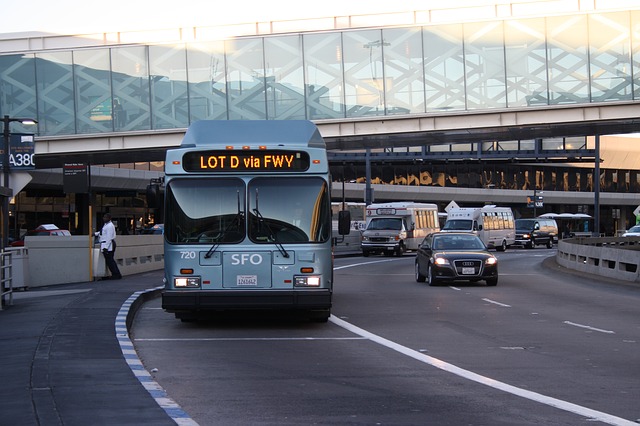10 Welcome Book Ideas: Give Guests Something They Love
The beginning of any memorable vacation starts with a greeting. While it’s customary to send an email with important information, a welcome book inside the vacation rental – and sent prior to check-in – takes guest satisfaction to a new level. Visitors want to know everything they can about an area, especially before they arrive.
“Our operating philosophy as a company is quite simple: Treat our owners and our guests the way we would want to be treated if we owned or were renting a vacation property,” says Peter Moersen, Low Country Coastal Rentals-iTrip Vacations®. “To that end, we send property books out two times to our guests prior to their arrival.”
Ready to make guests smile and give them something valuable to read on their trip? Check out our tips for creating a welcome book guests will love.
Welcome Book Ideas: 10 Topics to Boost Guest Experience

Start With a Greeting
A personal welcome message lets guests know who you are and that you care about their business. Write a greeting that thanks them for booking with your company and includes the management information in an obvious location.
Have fun, be genuine and welcome them! Once the greeting message is entered, include a logo that links to your website in case they need it. This is also a great place to direct them to an app for more information or to find useful tips.
Think Like a Guest
Now it’s time to think like a guest. What have previous renters asked or needed? Is there a list of FAQs that come up or are there questions in reviews? Think about what’s most valuable to them, and list everything that should appear in the book. Local managers know the area best, so keep in mind recent news, law changes, policies and other updates.
“We have been told by our guests that they want to begin planning their vacations well in advance of their arrival and arranging activities, making reservations, and feeling comfortable with the home and the area,” Moersen says. “We developed our welcome books as an in-home book but have created an electronic file that emails out with their paid-in-full email and their pre-flight check-in email.”

Lots of Photos
One a list of topics has been completed, gather photos of the area and/or home. High-quality images can showcase an area and provide guests a real-feel before they arrive. For example, mountain destinations should include photos of trails, ski lifts, downtown, lakes, rivers, etc. Plan to include at least one high-resolution photo per section. Present them in a way that complements the copy and encourages guests to read more.
Maps also give guests helpful information while adding value to the welcome book. Think about maps that include the area, trails, closest attractions/restaurants and downtown. Many sites have maps listed on websites for others’ use, so look around and see what others have available.
Local Numbers, Resources
Emergency numbers and local information is essential to guests, especially if they are new to the area. In addition to the property management contact information, include local numbers to police and fire departments, cleaning and maintenance crews, poison control center, local pharmacies, security/resort customer service, and local news channels for weather and traffic.
Next add local partners. Many property managers work with equipment rental companies, area attractions, grocery providers, concierge services, delivery companies and more, so include those numbers as well. If those companies have a website, link to each one so guests can easily visit those websites.

Top Things to Do
Travelers want the full vacation experience. Guide them in the right direction with a list of the top things to do. Include the best attractions for singles, couples and families. Offer ideas for outdoor adventure, museums, rainy-day options, kid-friendly attractions, shopping and other activities that makes the destination special.
Some guests may also want to attend a religious service, so don’t forget the places of worship and service times. Nashville – for example – has more than 600 churches in the area, so pick the ones in proximity to the rental. This narrows down options and saves them time.
Top Places to Eat
The local food scene ranks as a top way for visitors to immerse themselves in an area, and this includes local grocery stores and farmers markets.
- List the top restaurants/stores in the area, and consider different food tastes and special diets. Include staples such as seafood, pizza, farmers markets, closest grocery stores, international, romantic and waterfront/mountainside.
- Then add a special section that includes family spots, good for kids, vegan-friendly and gluten-free options.
- Managers should add their favorite places for breakfast, lunch, dinner and desserts. Provide insights into the best of the area to both help the guests know where to go and build a trusting relationship with them.
Suggested Itinerary
Every vacation destination has a list of ‘musts’. These are the things guests must see or try. Many times, guests will know what they want to do, however having a sample itinerary helps them plan and think of new ideas.
Create an itinerary based on one to three days. Start with breakfast and coffee, and plan out a day for them. Include the ‘musts’ and think about what the destination is known for. For example, anyone visiting Cincinnati will be asked if they tried Skyline chili. What is your area known for and what should your guests do to create a memorable vacation?

Transportation Options
Next add essential information about getting around the area. Depending on the location, vacationers may have access to public transportation, trolley services, free transportation, taxis and ride-share programs. Include transportation options that help your guest get around hassle-free. Also list if Uber or Lyft is available.
Other transportation options include toll roads, bridges and specific directions. For example, not all tolls take cards, so let your guests know to bring small bills. Also notify guests of long-term construction projects and provide an alternate route. All of these will help guests get around the area and prevent frustration and wasted time. Don’t forget the maps.
Instructions for the Home’s Devices
Avoid extra calls, text and emails by adding basic instructions for the devices inside the home. Include instructions for the TVs, DVD players, cable, thermostat, controls to pools/hot tubs, HVAC, boats, garages and other amenities.
Consider appliances as well. Is there electricity or natural gas? What about fireplaces? Include instructions to gas appliances, washers and dryers, Keurigs or similar coffee makers, and keep instruction booklets in a drawer or closet for easy access.
Rental/Neighborhood Rules
Some resorts and private neighborhoods have specific rules about storage, clean up, noise and other concerns. Make sure guests know the rules and list laws that may affect their vacation. Examples include beach drinking laws, trash disposal, pets, and swim hazards. Include any system that helps guests know when an area is safe for travel, such as flags or avalanche warnings.
Find more ways to improve customer service and make your rental stand out among the competition.
Additional Sources: Evolve, Touch Stay
